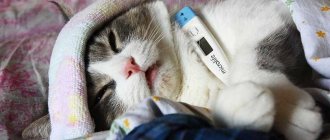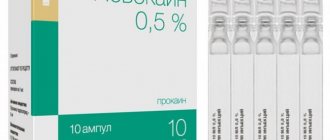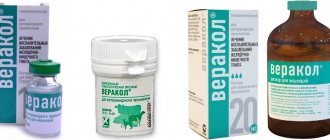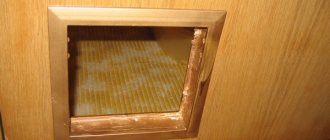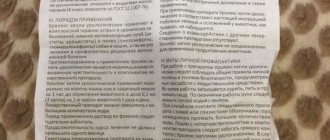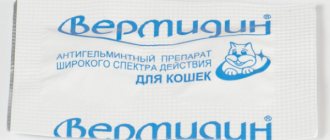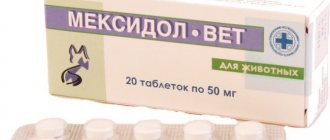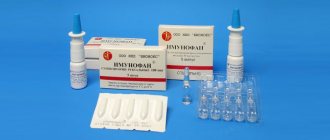If signs of dehydration are detected, the veterinarian will prescribe glucose for the cat. It is important to understand that a kitten and an adult especially need different dosages of the drug. Saline solution is injected into the pet subcutaneously at the withers or intravenously. Before injecting, the instructions for use should be carefully studied, since 5 percent glucose has a number of contraindications and often provokes negative reactions, especially if the dosage is not selected according to the weight of the sick cat.
Release form and effect of the drug
Glucose solution is a clear or slightly yellowish liquid contained in a glass vial or bottle. You can purchase injections for cats at any veterinary pharmacy. The main substance of the medicine is crystalline medical or hydrated glucose. The medication for cats also contains additional substances, such as:
- injection water;
- sodium chloride.
It is possible to purchase glucose in 5, 10, 25 and 40%, in which the percentage means the content of the active ingredient per 100 ml. Some veterinarians recommend feeding the solution by pouring the required amount of medicine into the cat's mouth using a syringe. But it is better to give an injection with glucose, since injections are more effective, especially if the pet is in serious condition. The medicine is used to replenish nutrients and fluids in the cat's body in case of dehydration.
One of the main effects of glucose is to improve metabolic processes in the cat’s body and stabilize heart function.
How to give an injection to a cat and carry out the procedure as painlessly as possible?
The traditional place for subcutaneous injections in adult animals is the withers area. He was chosen based on the following criteria:
- the presence of a sufficient layer of subcutaneous tissue in which a drug depot can be created;
- the absence of large arteries, veins and nerve trunks that can be damaged during injection;
- accessibility of this area for manipulation;
- less sensitivity compared to other parts of the body;
- the animal is not able to reach the injection site with its tongue or teeth;
- the pricked area does not cause pain with further movements.
It is recommended for kittens to inject the drug not into the withers, but into the upper segment of the hind leg. This site also has a good layer of subcutaneous tissue and is safe for needle insertion.
How to give your pet an injection as painlessly as possible? The secret to successfully performing this manipulation lies in securely fixing the animal and following the instructions during the injection. Procedure steps:
- wash your hands with soap and wipe dry;
- wear protective gloves;
- carefully read the label on the bottle and make sure that it is glucose and not another substance;
- check the expiration date, which should be indicated on the bottle;
- print a disposable syringe;
- collect the required amount of glucose solution and, if necessary, dilute it with water for injection;
- ask someone to securely secure the cat by sitting it on a table or other flat surface;
- take the syringe in your working hand, release the needle from the protective cap, place the syringe in a vertical position with the needle up and lightly press the piston to release air bubbles until a drop appears at the end of the needle;
- With your free hand, gather the skin on the cat’s withers into a fold, slightly pulling it upward;
- In one motion, insert the needle one-third into the skin fold, holding the syringe parallel to the cat’s body;
- when injecting into the front of the thigh, you should securely fix the limb, which is most conveniently done by placing the kitten on your or an assistant’s lap;
- smoothly introduce the drug by pressing the piston;
- remove the needle from the skin by moving backwards;
- release the grip on the withers and gently massage the pricked area;
- make sure that the fur at the injection site is dry and the medicine gets under the skin.
Indications for use: in what cases does it help?
The drug will be useful for animals with ailments of the digestive system.
Administration of glucose intravenously or subcutaneously, as well as feeding the cat with glucose, is required when prescribed by a veterinarian. It is recommended to give the drug to an animal in order to maintain strength in the body during illness. Administering the solution intramuscularly or intravenously is indicated in the following cases:
- severe intoxication associated with food poisoning and chemicals;
- dehydration of the cat's body;
- internal bleeding;
- state of shock;
- infectious diseases;
- liver dysfunction;
- diseases of the digestive system.
Operating principle
In veterinary medicine, isotonic and hypertonic glucose solutions are used.
For cats, one of these types may be used depending on the condition of the animal. The isotonic solution has a concentration of active substance of 5%. It is an easily digestible source of nutrition aimed at providing the animal’s body with the required energy. Glucose injection accelerates the removal of toxins, improves metabolism, and restores water balance.
A hypertonic solution contains 10, 25 and 40% of the main element. It plays an important role in improving the filtration properties of the liver and normalizes heart function. It has a beneficial effect on blood vessels and normalizes blood pressure. The drug helps to enhance the synthesis of hormones and enzymes in a weakened body, which increases its resistance to the disease.
Instructions for use
How to draw the solution into a syringe?
Before you introduce glucose into your cat’s body, you need to know how to properly prepare for the manipulation. The preparatory process includes the following procedure:
Bleeding air from the syringe after drawing the drug is a mandatory step before the procedure.
- Open the syringe and draw out the medicine. Use the tip of a needle to pierce the rubber stopper in the bottle with glucose.
- Draw the solution into a syringe in the indicated dosage.
- If the veterinarian deems it necessary, glucose is mixed with other medications according to the specialist’s prescription.
- Before administering the drug, carefully check its dose.
- Release excess air from the syringe.
How to give an injection?
You can do the procedure at home, but first consult with a veterinarian about the dosage and clarify the nuances of administering the injection. It is better to carry out the manipulation together, since the cat may break free or scratch the owner. The procedure is performed in the following sequence:
After capturing the skin fold on the animal’s withers, the prepared drug can be administered.
- Fix the cat. If necessary, wrap the pet in a towel or rag.
- With your left hand, take the pet by the withers, pressing lightly. It is more convenient for left-handed people to perform the procedure with their right hand.
- Hold the animal with your elbow, while slightly pulling back the skin in the withers area.
- With your right hand, take a syringe with a glucose solution and pierce the skin with a needle parallel to the surface on which the cat is located. The needle does not need to be inserted more than a third under the skin.
- Loosen the grip on the pet's withers and slowly inject, gradually introducing glucose. It is necessary to check whether the medicine is spilled out if the needle is not inserted deep enough. If the cat's fur is dry, then the procedure was performed correctly.
Veterinarians recommend that owners behave calmly and confidently during manipulation, since anxiety is transmitted to the pet and it may begin to break free.
How to draw the drug into a syringe
When everything you need is prepared and is at hand, you need to carry out the procedure using the following steps:
- Open the syringe and draw up the medicine by piercing the rubber stopper of the bottle with the tip of the needle.
- Draw the drug into a printed syringe in the prescribed amount.
- If prescribed by a doctor, mix glucose with other components according to the veterinarian’s prescription.
- Check the amount of medicine according to their doses.
- Release excess air from the syringe filled with medicine.
It should be said that after the stage of drawing the drug into the syringe, it is recommended to call one of the family members for help for further actions.
It is also important to ensure that the pet does not drink glucose or other medications while the owner is preparing for the injection.
Contraindications and unwanted effects
This drug is not prescribed to diabetic animals.
It is possible to give glucose to a cat orally by dripping the solution into the pet's mouth. With any method of using the medicine, you must strictly adhere to the dosage prescribed by the veterinarian in order to avoid unpleasant consequences. The main contraindication to the use of glucose is the cat’s individual intolerance to active or auxiliary substances. And also, experts do not prescribe the solution to pets who have diabetes. Owners should be careful about giving glucose to cats during pregnancy, as this can negatively affect the development of the babies. It is contraindicated to use the medicine simultaneously with the following drugs:
- general anesthetics;
- sleeping pills;
- alkaloid solutions.
Owners should also take into account that the simultaneous use of glucose and analgesics or antifungal agents weakens the effect of the latter. If your cat drinks or administers the solution incorrectly, then after a while, adverse reactions may appear, such as:
The appearance of thirst in an animal indicates improper use of the drug.
- nausea;
- gagging;
- decrease in phosphorus, potassium and magnesium in the cat’s body;
- unquenchable thirst;
- skin rashes and itching;
- pain at the injection site.
Price
The solution is a fairly inexpensive drug. Its price will depend on the volume of the bottle, the concentration of the active substance, and the financial policy of the manufacturer.
On average, the cost for a 100 ml bottle is 50 rubles.
Home » Diseases » Glucose for animals instructions for use. Glucose for cats dosage
In the section on the question Question for veterinarians and knowledgeable people. What physical the solution is more nutritious than glucose (subcutaneously for a cat). asked by the author Outgrowth, the best answer is Subcutaneous injections with a nutrient solution for dehydration of the bodyLeonid Filippov For subcutaneous feeding with saline solution (or better Ringer-Locke solution from a human pharmacy), draw 10 cubes of saline solution into a 20-cc syringe.
There is also a 2% solution of Glucose in saline (also sold in human pharmacies) 2 cubes. If the cat is still dying of hunger, exhausted, then you can add five cubes of Glucose in saline a couple of times, nothing. In the same syringe - ONE type of vitamins. If it is an enteroinfection or the like, the most important vitamin is to alternate between B12, B6 and ascorbic acid.
The dose of vitamins is a quarter of a one-cubic ampoule. If you inject B12 (200 IU per ampoule), then take half an ampoule. If B12 (500 IU per ampoule) is a quarter of the ampoule. And it’s good to add cocarboxylase as the fourth component. I repeat, for each injection - one vitamin. Having collected all this into a syringe, chat, close the needle tightly with a cap and heat the syringe under running warm water until approximately 40 oC.
Then wipe and replace the needle with a needle from an insulin syringe. Using three fingers (thumb, index and middle) of the left hand, pull the cat’s skin so that the index finger is between her shoulder blades. A sort of hump-hood is formed with a fold under the index finger. Wipe thoroughly with alcohol.
Make sure that there is free space under the skin (as if there is air in it), press slightly on the plunger of the syringe so that the medicine splashes out a little at all. Insert the needle into this space - be sure to make sure that its tip is located UNDER the skin, and not IN skin. Inject the medicine (all 12-18 cubes) in a row - slowly - into this subcutaneous space.
It should be EASY to walk, as if in the air. If it doesn’t go, then the needle is in the skin! A soft swelling will form on the back of the neck for a short time - this is normal and completely painless for the cat. It will dissolve before our eyes, and the animal will immediately feel a little better. If the cat does not drink for a day or more, it should be injected once every three to four hours until the cat begins to pee profusely.
After this - at least three times a day - until she recovers and starts drinking on her own. ATTENTION! This is not a treatment for the underlying disease, but support for water-salt balance! I know of cases where people in extreme situations boiled ordinary tap water for a long time with table salt dissolved in it (saline solution - 0.9% NaCl) and glucose from tablets - and saved the animal’s life.
Even if the cat cannot eat food or is not allowed to do this, it NEEDS subcutaneous injections! (((). We gave an injection of no-shpa intramuscularly and an enema (butterfly syringe) with glycerin, the stool began to pass perfectly.
It is also good to relieve constipation in cats with Duphalac; cats themselves can lick it off and a teaspoon is enough. so that after 2-5 hours, soft stools begin to pass (not diarrhea). And you can give baby food in jars (meat puree), it is not greasy and is absorbed well. Good luck to you in the future and may there be competent veterinarians!
Intramuscular injection for a dog
Can you give your dog an injection yourself? This is usually what the doctor asks before making a prescription. No! “This is not for me, I’m afraid,” the owner of the animal answers with fear in his eyes, while others, on the contrary, can install an IV on their own.
Let's, together with those who don't know how, learn how to properly give an injection to a dog, this skill will help you cure your pet faster and you will also save money on calling a veterinarian.
What are we going to inject with?
Today at any pharmacy you can buy disposable syringes of different sizes, which will make it easy to give an injection. Take the appropriate syringe depending on the size of the animal and the dose of the drug.
In this photo you see an ordinary plastic two-room apartment. In blue, I marked the volume as 1 ml or 1 cube (cm 3), and in red as 0.4 ml.
Disposable syringe “kopeck piece”
But on this five, the volume is also marked in blue as 1 ml, and in red as 0.4 ml.
Disposable syringe “five”
Be careful, people often get confused between syringes. In the first case, in order to inject 0.4 ml, we mark 4 divisions, and in the second, for the same volume, we need to mark 2 divisions. I don't want to be boring, but this is important. Nothing bad will happen if you make a mistake when injecting saline or vitamins, but you can’t make a mistake with antibiotics or hormones.
Perhaps the most popular types of syringes are: kopeck and five, but they also use huge ones - the Janet syringe (150 ml, this was how Morgunov was vaccinated against foot and mouth disease in the film "Prisoner of the Caucasus") and very small ones - insulin. The size depends on the dose and properties of the drug, I do not recommend injecting oily and viscous solutions with insulin or kopeck piece, of course you can, but you yourself will suffer and torture the animal.
Even small breeds can use a regular two-cc syringe, but I feel sorry for the dog, so they inject it with a thin insulin needle. But it’s better to endure one injection from a thick needle than to inject a viscous substance through insulin for a long time. Yes, it can be used for non-concentrated solutions, but not for viscous ones.
We suggest you read: Dermatitis in cats, types of symptoms and treatment
How will we inject
Before properly injecting your dog, you need to prepare the injected solution and needles. It is important that you bring the medications to the animal’s body temperature.
Well, as a last resort, warm them up in your hand, or better yet, put them in warm water, but you don’t need to overheat, 37-39 0 C is enough. Then the dog won’t be in pain and it will tolerate the injection easier, especially this rule must be observed when you inject a large volume of liquid.
Another important point, pay attention to this photo.
Antibiotic bottle
It shows a regular bottle of antibiotics, sealed with a rubber stopper. When you use these bottles, after puncture, replace the needle with a new one. Of course, this is not necessary, but it is advisable, because the needle becomes very dull from the cork and can become clogged with a piece of rubber. And when you poke an animal with a blunt needle, it will naturally hurt, the dog will whine, and you will panic.
You will not have a question about how to properly give an injection to a dog if you think through everything and prepare in advance; it is also important to have peace of mind during the procedure and behave confidently. Your pet senses when the owner is nervous and the fear will transfer to him.
There are several types of ampoules, most of them open without filing, such ampoules are marked with a white belt or a colored dot, marked with a red arrow in the photo.
Sometimes such marks seem to be placed for beauty and the glass still needs to be filed down. The undercut can be made using a special disk, which is placed in the package with the drug, or a file, needle file, nail file, on the corner of a sharpening stone, and then you can figure it out yourself.
When breaking off glass, protect your fingers with a piece of cotton wool or syringe packaging, I usually use packaging. Be sure to do this so as not to injure your hands; sometimes the ampoule may burst in your hands, especially when you are in a hurry, which often happens in emergency situations, for example.
It happens that there is more drug in an ampoule than you need for one injection, so in order to save money, you can put all the substance into a syringe and use it within 3-4 days. Remove air from the syringe and store in a cool, dark place, preferably a refrigerator. When you give an injection, change the needle and inject the desired dose.
We draw the required dose from a larger syringe into a smaller one
Now, after a long but necessary preparation, let’s move on to the main thing - how to properly inject a dog.
The main thing is to take your time, lay the dog on its side so that it relaxes the muscles, feel the back of the thigh, find where the bone is located - there is no need to prick there. And you need to insert the needle approximately into the middle of the thigh, where you will find the most muscles. This photo shows the injection site, click on the photo to enlarge.
Intramuscular injection site
There are many tricks and techniques regarding how to hold a syringe; you can use different ones, but the main thing is that after inserting the needle you feel comfortable pressing the plunger. When the needle is sticking out in the butt, there is no need to turn the syringe around to better see the scale or turn it from side to side.
Take the syringe at the base of the needle and firmly insert the needle, then grab and press the plunger. The depth to which you need to inject depends on the size of the dog, for small ones (up to 10 kg) by 0.5-1.5 cm, and for large ones you can inject up to 3 cm.
The rate of introduction of solutions depends on its quantity and density, on average it is 1 ml in 2 seconds. After the injection is made, remove the syringe at the same angle as you injected, also confidently and cheerfully. Hold the skin with your free hand, and then massage the injection site, it will not hurt so much and, by massaging, you will shift the layers of tissue so that the drug does not flow out through the puncture.
Now let’s figure out how to properly inject a dog subcutaneously or in the withers area. This is the easiest way to administer fluids, but it has some limitations. It is not advisable to administer concentrated drugs - it will hurt, and then swelling and other complications will appear. For example, seemingly harmless glucose, which many people like to inject so that the dog does not die of hunger, is released in different forms. Or rather, different concentrations: 40% and 5%, so a 5% solution can be administered subcutaneously, but a 40% solution can only be administered intravenously.
Recently, an acquaintance unknowingly injected his dog into the withers area with 10 ml of 40% glucose, the poor dog literally peed itself. I don’t want to scare you, but I want you to be careful and know how to properly inject your dog.
Is it possible to overdose?
If you follow the dose prescribed by the veterinarian and give it by mouth or give the injection intramuscularly correctly, then this phenomenon will not be observed. When owners begin to give their pet water or give injections on their own, the risks of overdose are high. If the solution is used excessively, the animal's blood and urine sugar levels increase. An incorrectly selected dose of glucose can lead to an imbalance of electrolytes and the accumulation of large amounts of fluid in the cat's body. If unpleasant symptoms continue for several days, then your pet should be taken to the veterinarian. In such cases, the medication is discontinued and insulin is prescribed or saline infusion is performed.
The medicinal power of droppers
For infusion (intravenous), a 5% dextrose solution is usually used. The healing liquid is packaged in plastic, hermetically sealed bags or 400 ml bottles. The infusion solution consists of:
- Purified water.
- Directly glucose.
- Active excipient.
When dextrose enters the bloodstream, it breaks down into water and carbon dioxide, actively producing energy. The subsequent pharmacology depends on the nature of the additional drugs used that are part of the droppers.
Where is glucose used?
The purpose of such therapeutic treatment is carried out for many different diseases and further rehabilitation of an organism weakened by pathology. A glucose dropper is especially beneficial for health, for which it is prescribed in the following cases:
- hepatitis;
- pulmonary edema;
- dehydration;
- diabetes;
- liver pathologies;
- state of shock;
- hemorrhagic diathesis;
- internal bleeding;
- alcohol intoxication;
- general exhaustion of the body;
- a sharp decrease in blood pressure (collapse);
- profuse, persistent vomiting;
- infectious diseases;
- relapse of heart failure;
- accumulation of fluid in the pulmonary organs;
- stomach upset (prolonged diarrhea);
- exacerbation of hypoglycemia, in which there is a drop in blood sugar to a critical level.
READ Pathologies of the third eyelid in cats
Intravenous infusion of dextrose is also indicated if it is necessary to introduce certain medications into the body. In particular, cardiac glycosides.
Isotonic dextrose solution in rare cases can cause a number of side effects. Namely:
- increased appetite;
- weight gain;
- feverish conditions;
- necrosis of subcutaneous tissue;
- blood clots at the IV site;
- hypervolemia (increased blood volume);
- overhydration (violation of water-salt metabolism).
If the solution is prepared incorrectly and dextrose is introduced into the body in increased quantities, more tragic consequences can occur. In this case, an attack of hyperglycemia and, in especially severe cases, a coma may occur. Shock occurs due to a sharp increase in sugar in the patient's blood.
So, while useful, intravenous glucose should only be used when indicated. And directly as prescribed by a doctor, and procedures should only be carried out under medical supervision.
Very often, small, decorative breeds of dogs, such as Yorkshire terriers, Pomeranians, and Chihuahuas, experience hypoglycemia - a decrease in sugar levels in the puppy’s body. Hypoglycemia is even more common in Pomeranian dogs, especially when traveling or flying.
